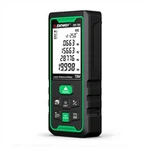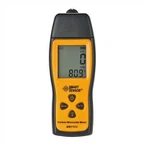Three methods of testing triode with multimeter
The first method: For the pointer meter with the hFE jack of the triode, first measure the b pole, then insert the triode into the jack at will (of course, the b pole can be inserted accurately), measure the hFE value, and then Turn the tube upside down and measure it again, the one with the higher hFE value is measured, and the insertion position of each pin is correct.
The second method: For the meter without hFE measuring jack, or the tube is too large to be inserted into the jack, you can use this method: For NPN tube, first measure the b pole (whether the tube is NPN or PNP and its b pin It’s easy to measure, isn’t it?), put the watch in the R×1kΩ range, connect the red test lead to the hypothetical e-pole (be careful not to touch the tip or pin of the test pen with the hand holding the red test lead), and connect the black test lead to the hypothetical e pole. C pole, pinch the tip of the test pen and this pin with your fingers at the same time, pick up the tube, lick the b pole with the tip of your tongue, and see that the pointer of the meter head should deflect to a certain extent. If you connect the test leads correctly, the pointer deflection will If it is larger, if it is connected incorrectly, the deflection of the pointer will be smaller, and the difference is obvious. From this, the c and e poles of the tube can be determined. For the PNP tube, connect the black test lead to the hypothetical e pole (don’t touch the pen tip or pin), and the red test pen to the hypothetical c pole. At the same time, pinch the test pen tip and this pin with your fingers, and then lick the b pole with the tip of your tongue. Pole, if the test leads are connected correctly, the pointer of the meter head will be deflected relatively large. Of course, when measuring, the test leads should be exchanged and measured twice, and the final judgment can only be made after comparing the readings. This method is suitable for triodes of all shapes, which is convenient and practical. According to the deflection range of the watch hands, the magnification ability of the tube can also be estimated, of course, this is based on experience.
The third method: first determine the NPN or PNP type of the tube and its b pole, then put the meter in the R×10kΩ range. For NPN tubes, when the black test pen is connected to the e pole and the red test pen is connected to the c pole, the needle may have a certain Deflection, for the PNP tube, when the black test lead is connected to the c pole and the red test lead is connected to the e pole, the needle may have a certain deflection, and vice versa. From this, the c and e poles of the triode can also be determined. However, for high pressure pipes, this method is not applicable.
For common imported high-power plastic-sealed tubes, the c poles are basically in the middle. The b of the medium and small power tubes is likely to be in the middle. For example, the commonly used 9014 triode and other types of triodes in its series, 2SC1815, 2N5401, 2N5551 and other triodes, some of the b poles are in the middle. Of course they also have the c pole in the middle. Therefore, when repairing and replacing triodes, especially these low-power triodes, you can't just install them as they are, and you must test them first.






